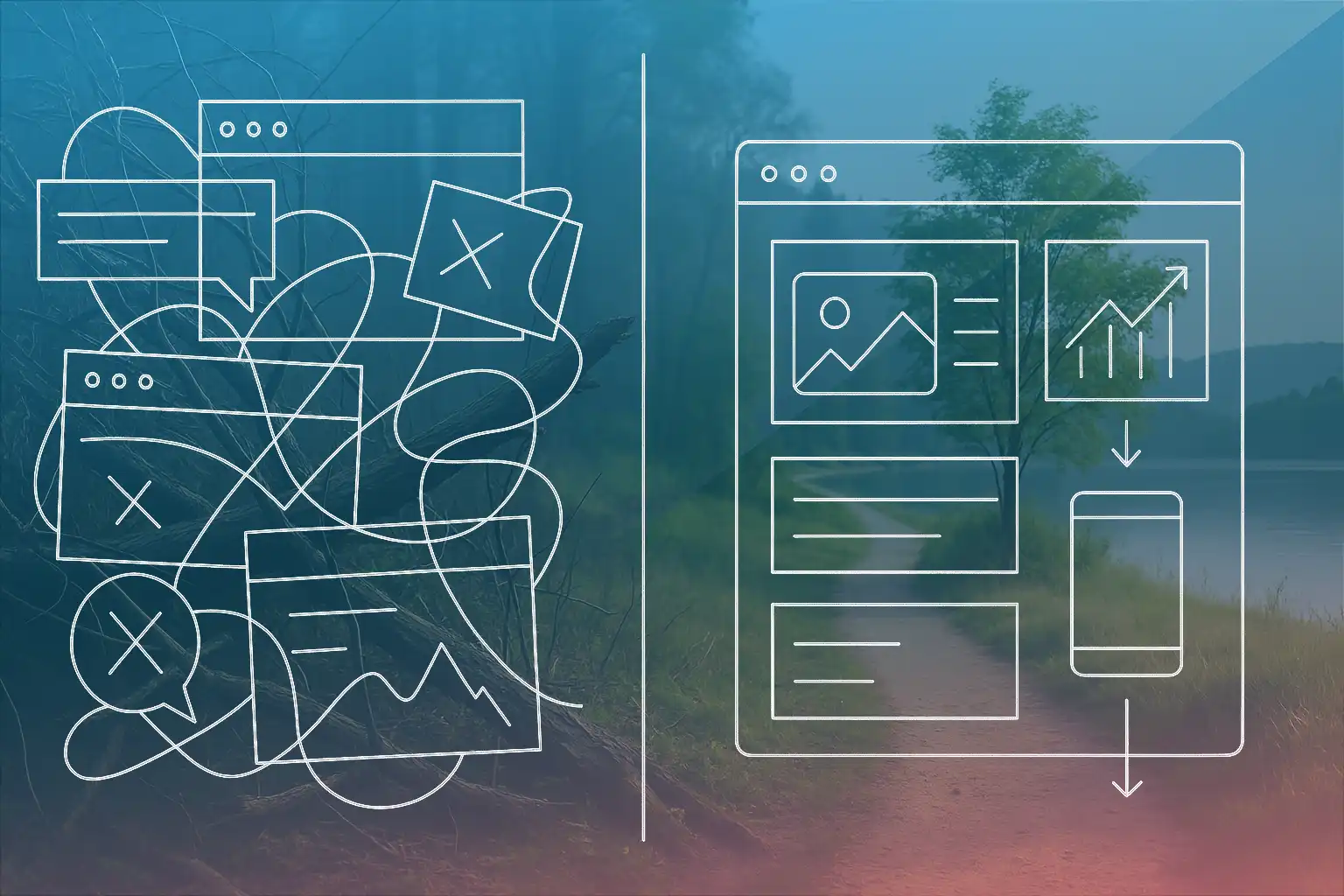
If your WordPress site has started to feel more like a maintenance chore than a strategic tool, you’re not alone.
At Serenity, we work with purpose-driven teams including nonprofits, foundations, and service organizations navigating complex digital ecosystems. Many come to us saying things like:
- “We’re constantly troubleshooting plugins.”
- “Our team struggles to make updates without technical help.”
- “The backend feels overwhelming.”
- “Our site is bloated after years of updates from multiple groups.”
- “A major update broke our site and we had to hire emergency help to fix it.”
- “It feels clunky, slow, and a little dated.”
These are valid concerns that point to a deeper question: is there a platform better suited to how your team works today? Let’s explore how Webflow compares.
WordPress: A Powerful Tool With Some Heavy Lifting
Originally launched in 2003 as a blogging platform, WordPress has since adapted into a full-featured, general-purpose content management system. Today, it powers over 40% of all websites on the internet, a testament to its widespread adoption and flexibility.
That said, the web has changed in (checks calendar) 19 years. And so have the needs of the organizations building for it.
With that growth has come complexity:
- Its architecture is legacy (PHP, MySQL) and heavily dependent on external plugins and themes.
- Page builders introduce inconsistent design patterns and often generate bloated code.
- It can become fragile over time, with duplicative or outdated plugins from multiple contributors.
- Major updates can unexpectedly break functionality, requiring emergency fixes or costly rebuilds.
WordPress has played a foundational role in shaping the internet. It continues to serve many teams well, especially those with technical resources in-house. But it often demands significant ongoing attention.
Webflow: Built for the Modern Web
Webflow is a visual development platform built from the ground up to serve the modern web. Launched in 2013, it enables designers and developers to create fully custom websites with a clean CMS, structured content architecture, and secure hosting.
Unlike WordPress, Webflow wasn’t adapted from earlier systems. It was purpose-built to deliver performance, control, and ease of use.
Webflow is now used by:
- Agencies designing high-impact digital experiences
- In-house teams managing content without coding
- Organizations seeking autonomy without sacrificing quality
Pros and Cons: WordPress vs. Webflow
Here’s how the two platforms stack up:
WordPress
Pros:
- Widely used with a large support community
- Flexible plugin ecosystem for added functionality
- Familiarity for many content editors and developers
- Open-source and extendable
Cons:
- Requires constant updates (core, plugins, themes)
- Security vulnerabilities are common in third-party plugins
- Backend often becomes cluttered over time
- Page builders can introduce bloated, slow-loading code
- Requires developer intervention for structural or layout changes
Webflow
Pros:
- Built-in CMS that supports structured content beyond just blog posts
- Clean, performant code output (HTML, CSS, JS)
- Visual design tools enable rapid prototyping and development
- Simple editing interface for non-technical users
- Fully managed hosting and security
Cons:
- Not open-source; more limited in customization at a codebase level
- Learning curve for teams unfamiliar with visual design tools
- Monthly cost may be higher than basic WordPress hosting
Final Thought
WordPress remains a viable solution for many use cases. But if your team is running into issues like slow performance, cluttered infrastructure, or editing limitations, it may be time to consider a shift.
Webflow offers a more structured, modern experience that supports clarity, performance, and ease of use.
At Serenity, we help teams explore their options with intention and care. Webflow is one of several tools we use to bring your digital presence into alignment with your broader mission.
Curious whether Webflow is the right move? Start by reading our guide: 7 Essentials of a Successful Website Redesign.




